The Canadian Space Firm (CSA), established in 1989, is a civilian authorities home firm that targets to promote the peaceful use of home for the advantage of Canadians. Its most high-profile duties embody the Canadarm robotic arm assortment and the Artemis 2 moon mission, which might attribute CSA astronaut Jeremy Hansen.
The Canadian astronaut program predates the CSA. The corporate and its predecessors have recruited 14 astronauts all through 4 campaigns. Most of those folks flew in home. Basically essentially the most well-known of these astronauts was Chris Hadfield, who commanded the Worldwide Space Station (ISS) in 2013 after having flown on two earlier missions.
Traditionally, in distinction with NASA (which usually has an annual funds of 1 factor like $27 billion, counting on the 12 months), the CSA has acquired a smaller annual funds of roughly CA$400 million ($300 million USD). The CSA thus relies upon carefully on collaboration. NASA has been the CSA’s longtime launching confederate, by means of seats and science secured with the Canadarm assortment. The CSA moreover companions with totally different authorities departments and with Canadian firms to supply satellites and experience, with a watch in direction of commercialization the place potential.
Canadian governments have been criticized by entities similar to the Canadian World Affairs Institute for leaving prolonged gaps between the home approach updates that resolve the amount of funding the CSA receives. That talked about, the 2023 federal funds for the CSA included substantial new funds on prime of the corporate’s annual funds: CA$2.5 billion ($1.84 billion) for science related to the Gateway home station, a deliberate lunar outpost led by NASA; extending ISS participation to 2030; and a lunar utility car; amongst totally different points. That money will most likely be unfold over as many as 14 years, counting on this technique. One different fundamental tranche of funding in 2019 was issued for the occasion of Canadarm3, a model new robotic arm.
Related: Artemis 2’s Canadian astronaut obtained their moon mission seat with ‘potato salad’

Elizabeth Howell
Elizabeth Howell (she/her), Ph.D., is a workers writer throughout the spaceflight channel since 2022. Her reporting accommodates quite a lot of exclusives with the Canadian Space Firm and talking with Canadian astronauts on the Worldwide Space Station.
CSA Steadily requested questions
Does CSA work with NASA?
Positive, CSA works with NASA. CSA is a member of the Worldwide Space Station consortium, amongst many various duties.
What is the Canadian Space Firm recognized for?
The CSA is known for quite a lot of astronauts, similar to Chris Hadfield and Jeremy Hansen. It moreover is known for providing the Canadarm assortment of robotic arms.
Who’re the 4 vigorous Canadian astronauts?
The 4 vigorous CSA astronauts are Jenni Gibbons, Jeremy Hansen, Joshua Kutryk and David Saint-Jacques. Canadians may also fly to deal with with NASA or a personal agency, nonetheless.
Canadian home sooner than the CSA
Authorities-funded civilian home actions predate the formation of the CSA by a few years, by means of actions similar to radio communications and sounding rockets that probed the upper surroundings. The first Canadian satellite tv for pc television for computer, Alouette, was constructed beneath the purview of a now-defunct Canadian authorities division commonly known as the Defence and Evaluation Telecommunications Establishment (DRTE), in keeping with the CSA’s provides. Alouette went into home in 1962 atop a U.S. rocket.
Fashionable-day CSA actions will likely be traced to the 1967 Chapman Report, additionally known as “Larger Ambiance and Space Purposes in Canada.” John Herbert Chapman, chairman of the report committee, was a DRTE physicist and home scientist who carried out a key perform in Alouette. The report was immensely influential in authorities protection, in keeping with The Canadian Encyclopedia, as a result of the nation shifted its satellite tv for pc television for computer actions from science to industrial functions.
Totally different offshoots of the report embody Canada’s Anik A1 communication satellite tv for pc television for computer in 1972 and the communications agency Telesat, initially formed as a Crown (government-owned) firm, in 1969.
Related: Best mobile apps to find out home stations and satellites
Chapman moreover advisable that Canada create its private home firm pretty than sharing duties amongst totally different departments. Totally different authorities champions, similar to then-Science Minister Jeanne Sauvé in 1974, voiced their assist over the various years. Nonetheless the formation of the CSA would not come for an extra 22 years after the Chapman Report.
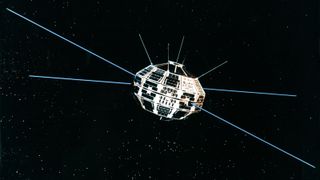
Early Canadarm work
Canadarm moreover predates the CSA’s establishment by a few years. In precise reality, the story begins on a 1951 sea voyage from Liverpool, England. George Klein, an inventor with Canada’s Nationwide Evaluation Council (NRC), examined cigarette paper he was rolling and, from that, had an idea to create a collapsible tube system for home use, in keeping with Space.com workers writer Elizabeth Howell’s e e book “Canadarm and Collaboration (ECW Press, 2020). The info initially obtained right here from Richard I. Bourgeois-Doyle’s 2004 NRC e e book, “George J. Klein: The Good Inventor.”
Klein’s work led to an antenna type known as the Storable Extendible Tubular Member, which can roll up for launch after which unfurl in home. The experience first flew on Alouette and continues venturing to deal with repeatedly, along with on the James Webb Space Telescope in 2021.
As Canada was flying satellites and its STEM antenna in home, NASA was deciding on the next directions for its human home packages after the Apollo moon missions of the Sixties and Nineteen Seventies and the Skylab home station. The historic previous of the home shuttle and the ISS are extended, nevertheless very merely put, NASA decided to pursue multinational collaborations throughout the Nineteen Seventies as part of its home protection. One function was to chop again costs, and one different was to create allies and deepen friendships all through quite a lot of protection targets. Canada was included in these discussions with NASA.
Related: ‘A completely new mind-set’: The ISS celebrates 20 years in home
In 1974, NASA and Canada’s NRC signed an settlement that, in essence, promised Canadian science missions on the home shuttle in change for a robotic arm (later known as Canadarm), in keeping with “Canadarm and Collaboration.” Notably, the settlement did not concentrate on astronauts.
Canadarm flew on fairly a number of home shuttle missions, starting with STS-2 in November 1981, and exceeded NASA’s expectations. (At the moment, the Canadarm assortment is managed by Canadian agency MDA Space with CSA funding, nevertheless once more in nowadays, the problem was led by Spar Aerospace and funded by Canada’s NRC.)

Canadian astronauts
Throughout the late Nineteen Seventies, NASA created a model new class of astronaut, commonly known as a “payload specialist,” who may, in some circumstances, be a worldwide nationwide liable for a small set of experiments. This opened the door for a Canadian astronaut program. In 1979, NASA extended an invitation for Canadian astronauts to Chapman personally, nevertheless the invitation not directly obtained misplaced when Chapman, 58, died instantly, in keeping with Howell’s e e book and an April 2, 1981 article from “The Ottawa Citizen.”
Then, in 1983, NASA’s Enterprise examine home shuttle was making a “goodwill” tour of worldwide stops, along with in Canada. Via the shuttle’s go to to Ottawa in June (which Howell, by luck, attended as an toddler alongside along with her mom and father), then-NASA Administrator Jim Beggs promised his firm would invite Canada to ship Canadian experiments, along with a Canadian astronaut, into home.
That effort launched a recruitment advertising and marketing marketing campaign in 1983 that launched in six new Canadian astronauts, along with luminaries like Marc Garneau (who, in 1984, turned the first Canadian astronaut in home) and Roberta Bondar (who, in 1992, turned the first Canadian girl in home). Their seats have been paid for by Canadarm, which, in its lifetime, serviced the Hubble Space Telescope and assisted on shuttle spacewalks. After the Columbia home shuttle disaster of 2003, Canadarm (along with a protracted extender) was repurposed to scan the underside of each shuttle with a digital digital camera to seek for any free heat defend tiles, which was one in every of many causes of Columbia’s demise.
Related: 20 years after Columbia shuttle tragedy, NASA pledges ‘acute consciousness’ of astronaut safety
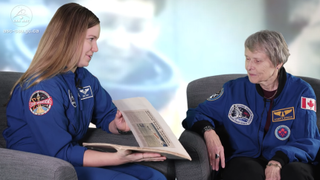
The success of Canadarm launched on successors. Canadarm2 was launched in 2001 for the ISS and was co-installed by Hadfield, who moreover acquired a rendition of Canada’s anthem in home from NASA mission administration. A useful robotic helper, Dextre, adopted in 2008. Canadarm2 was moreover repurposed in 2012 to assist certain cargo spacecraft in berthing to the ISS — a use for which it was not initially envisioned.
The next period of the robotic arm, Canadarm3, is predicted to serve NASA’s Gateway home station, which might orbit the moon. Gateway will assist Artemis program missions to the lunar ground. Canada’s contribution, which contains artificial intelligence for Canadarm3, funded the seat aboard Artemis 2. At least one totally different Gateway mission is assured for the CSA.
Related: What it’s choose to snag a spacecraft with the Worldwide Space Station’s robotic arm
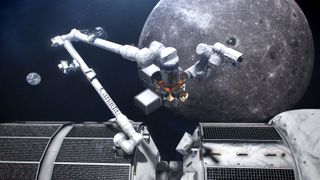
Notable Canadian astronaut missions
Canadians have flown in home privately and for NASA, nevertheless this half focuses on the Canadian authorities’s astronauts. At first, the federal authorities program was managed by Canada’s NRC. Then, after the CSA was formed in 1989, authorities astronauts flew on behalf of the CSA.
The first Canadian astronauts have been payload specialists, which means they’ve been liable for certain experiments on the shuttle and did not perform duties similar to spacewalks. Garneau, Bondar and Steve MacLean — who flew in 1984, 1992 and 1992, respectively — have been all payload specialists.
As this technique and the ISS planning matured, NASA invited certain Canadians to educate as mission specialists to help the nation obtain additional experience for home station missions. Canada moreover issued a second recruitment of astronauts that launched 4 new of us on board in 1992. Subsequently, Garneau and Hadfield, a model new trainee on the time, have been the first licensed mission specialists. (NASA later extended shuttle mission specialist teaching to additional astronauts, after which to all astronauts by default.)
Related: Life in home: Astronaut Chris Hadfield’s video info
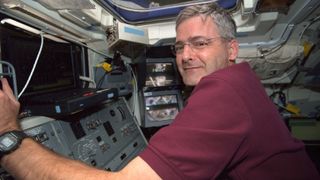
Primary CSA milestones throughout the Nineteen Nineties and 2000s included the first Canadian girl in home (Bondar, in 1992), the first Canadian on the Russian home station Mir (Hadfield, in 1995), the first Canadian to perform the Canadarm (Hadfield, in 1995), the first Canadian to go to the ISS (Julie Payette, in 1999) and the first Canadian to do a spacewalk (Hadfield, in 2001.)
An astronaut recruitment in 2008-2009 launched on two new astronauts: Hansen and David Saint-Jacques. In 2013, Hadfield turned the first Canadian commander of the ISS. Saint-Jacques had his first flight in 2018-2019, and Hansen is predicted to fly his moon mission in 2025 or so. (The sluggish tempo of flight assignments is partly due to the CSA’s comparatively small share of ISS funding, at 2.3%, since flights are based upon confederate contributions.)
CSA presently has 4 astronauts, although Canadians can and do fly to deal with by totally different means. Hansen is assigned to Artemis 2, and Saint-Jacques simply is not assigned to a model new mission for the second. The two others, Joshua Kutryk and Jenni Gibbons, have been chosen in 2017. Kutryk will fly on the Boeing Starliner-1 mission in 2025 or so for a six-month mission to the ISS, and Gibbons is backup to Hansen.
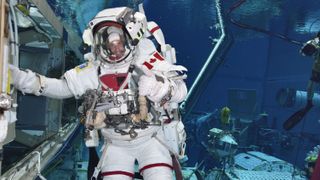
Totally different CSA actions
Robotics and astronauts take the lion’s share of CSA consideration, nevertheless the corporate will also be involved in several kinds of home work.
The David Florida Laboratory in Ottawa is a examine mattress for satellites sooner than they attain home. Satellites there are shaken, baked and put by means of digital interference checks to confirm they’re ready for launch. CSA may shut the laboratory in 2025, nevertheless is exploring totally different makes use of for the home.
The corporate moreover has funded a set of Earth assertion satellites that monitor the planet’s ground for pure disasters, modifications in agriculture and even ship actions. Basically essentially the most well-known set is the Radarsat assortment; Radarsat-1 launched in 1995, Radarsat-2 in 2007 and the Radarsat Constellation (a trio of satellites) in 2019. Successor Radarsat satellites are moreover throughout the works.
Payloads from CSA-funded duties have moreover traveled to totally different locations. As an illustration, the Mars Curiosity rover‘s Alpha Particle X-ray Spectrometer (funded by the CSA) has been analyzing the composition of rocks on the Crimson Planet for larger than 10 years. A Canadian laser flew to asteroid Bennu aboard NASA’s OSIRIS-REx mission. Quite a few Canadian experiments are on the ISS, specializing in sides similar to ageing on Earth and the outcomes of weightlessness. Artemis 2 experiments have not however been launched.
Nearer to Earth, the AuroraMAX digital digital camera presents keep views of auroras throughout the skies over Yellowknife, in Canada’s Northwest Territories. In Earth orbit, the SciSat satellite tv for pc television for computer examines the ozone layer and its depletion, considerably over northern Canada. Aboard NASA’s Terra satellite tv for pc television for computer, the Measurements of Air air pollution throughout the Troposphere instrument examines atmospheric air pollution in Earth’s surroundings. The CSA moreover supplies cubesat options periodically for Canadian school college students.
NASA’s James Webb Space Telescope, which launched in 2021, accommodates participation from the CSA. Canada provided the great steering sensor for the telescope to degree in home, along with a near-infrared imager and spectrograph.
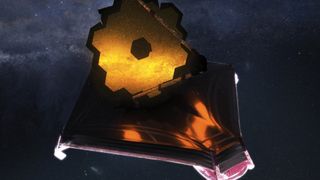
CSA expert Q&A

François-Philippe Champagne is the Canadian authorities minister (a federal politician with a portfolio of duties) liable for the CSA. He evaluations on to Canadian Prime Minister Justin Trudeau. Champagne was first elected in 2015 and was first appointed to Cabinet in 2019; Cabinet is the group of presidency ministers in Canada that are each liable for a portfolio. Champagne’s portfolios have included minister of worldwide affairs, minister of infrastructure and communities, and minister of worldwide commerce.
The place do you see the CSA’s perform in authorities?
The CSA brings [many] portfolios collectively. There’s the side of the home financial system, or sides that will revenue communities throughout the Arctic with effectively being and eating regimen in harsh environments. CSA [also] brings throughout the worldwide affairs portfolio.
In what strategies do you assume the CSA will revenue Canadians?
Space exploration is all about science, experience and innovation. And as a reminder, the science of in the mean time is the financial system of tomorrow. You needn’t go very far to see the dividends that home is bringing; merely think about GPS, which is now one factor typically utilized by all people.
What kinds of consultations are being completed with Canadian firms?
There’s a new Canadian home council [of companies] … and we do have to ensure that we mix Canadian firms throughout the strategic present chain. I’ve been talking to fairly a number of [international] home firms, like SpaceX, Blue Origin — and clearly talking to NASA.
This distinctive Space.com interview was completed on April 2, 2023, the day sooner than the Artemis 2 crew was launched. It has been edited and condensed.
Additional property
Maintain with CSA actions in precise time by following the corporate on Twitter and Instagram, and maintain up to date on info by visiting the CSA website online.
Bibliography
Bourgeois-Doyle, R. I. (2004.) George J. Klein: The great inventor. Nationwide Evaluation Council of Canada: NRC Evaluation Press. https://www.amazon.com/George-J-Klein-Good-Inventor/dp/0660193221/
Canadian World Affairs Institute. (2022, June.) Revitalizing Canada’s visions for home. https://www.cgai.ca/revitalizing_canadas_visions_for_space
Canadian Space Firm. (2018, September 28). Alouette I and II. https://www.asc-csa.gc.ca/eng/satellites/alouette.asp
Canadian Space Firm. (2023, March 29). Necessary investments to further propel Canadian home exploration. https://www.asc-csa.gc.ca/eng/info/articles/2023/2023-03-29-significant-investments-to-further-propel-canadian-space-exploration.asp
Chapman, J. H., Forsyth, P. A., Lapp P. A., & Patterson, G. N. (1967). Larger surroundings and home packages in Canada. Authorities of Canada. https://www.uottawa.ca/research-innovation/web sites/g/info/bhrskd326/info/2022-08/special-study-no.-1-upper-atmosphere-and-space-programs-in-canada.pdf
Franklin, C. A. (2015, March 4). John Herbert Chapman. The Canadian Encyclopedia. https://www.thecanadianencyclopedia.ca/en/article/john-herbert-chapman
Howell, E. (2020). Canadarm and Collaboration: How Canada’s astronauts and home robots uncover new worlds. ECW Press. https://www.amazon.com/Canadarm-Collaboration-Canadas-Astronauts-Uncover-ebook/dp/B089VGLY1Y
Kirton, J. (1990, February). Canadian home protection. Space Protection, 6(1), 61-71. https://doi.org/10.1016/0265-9646(90)90008-L











Leave a Reply